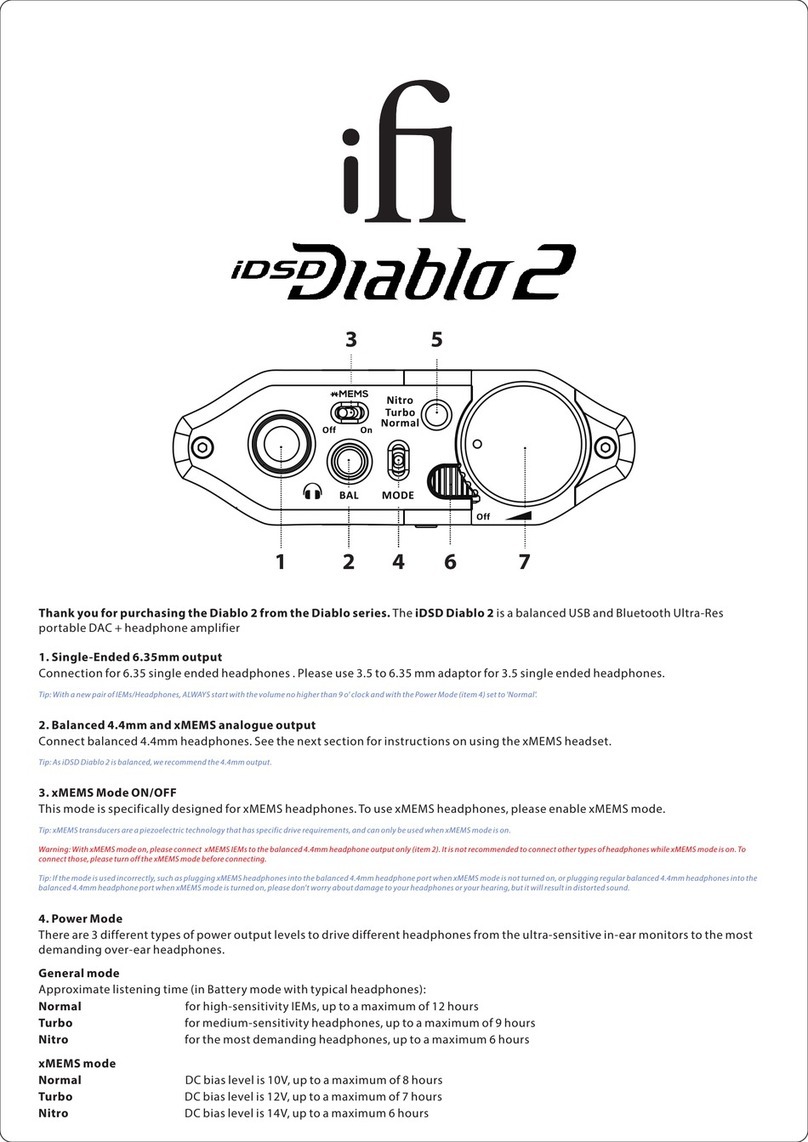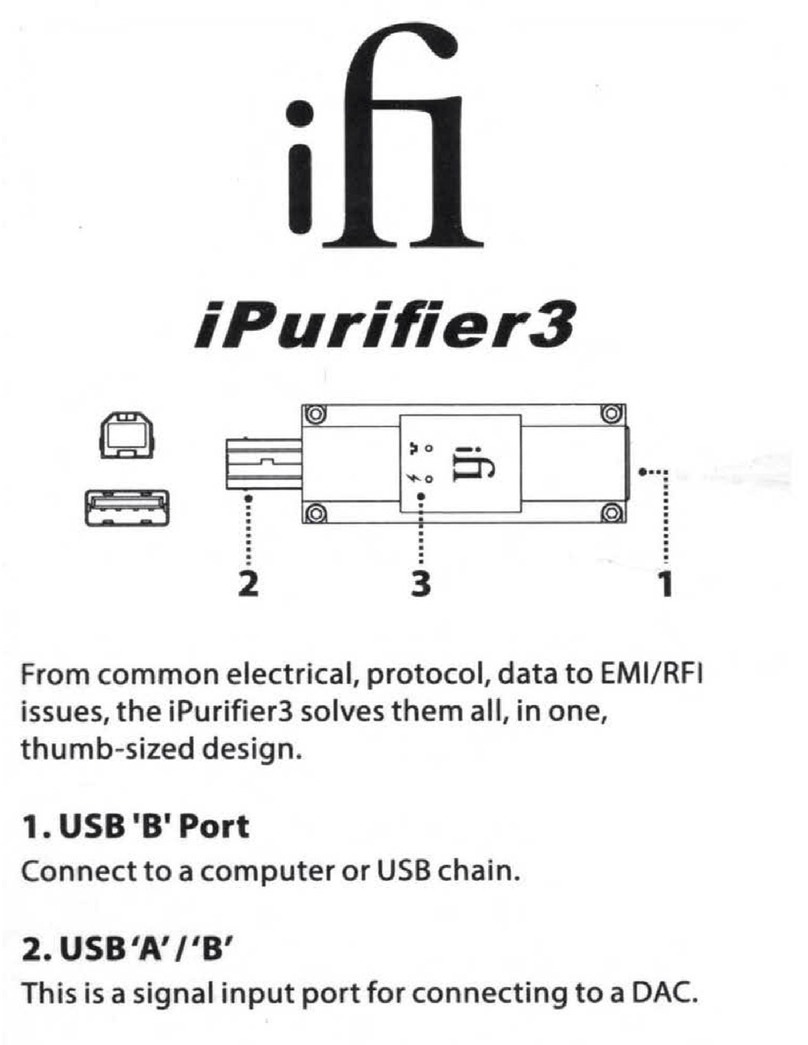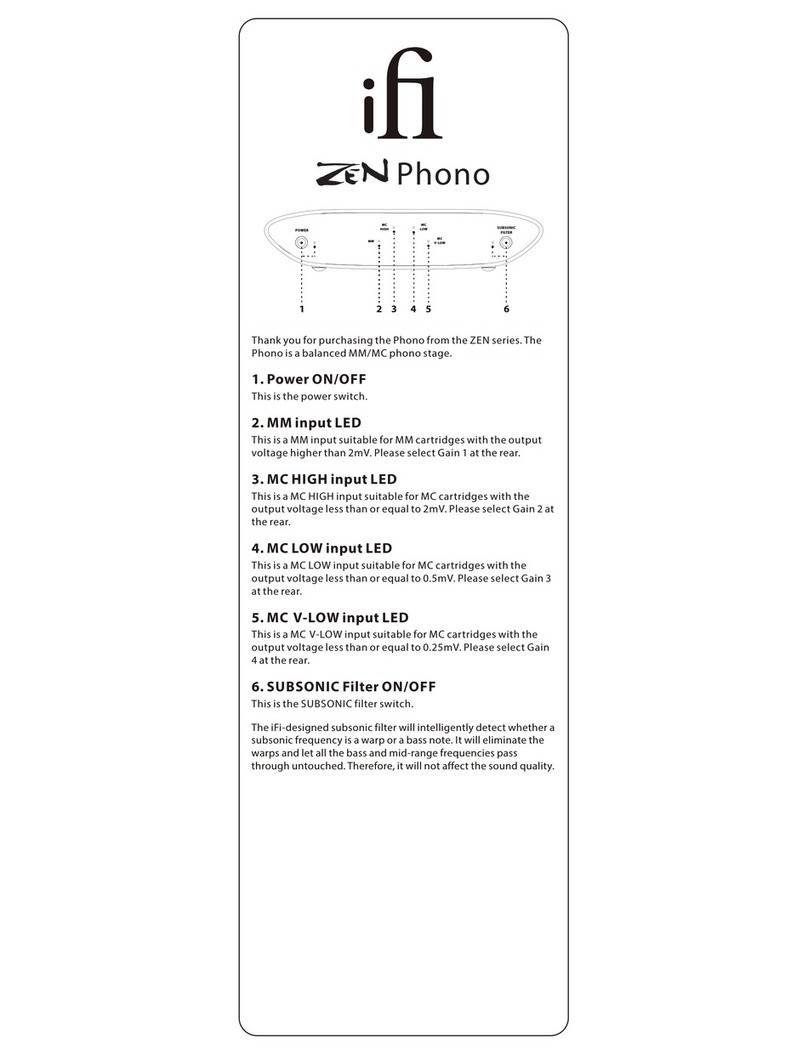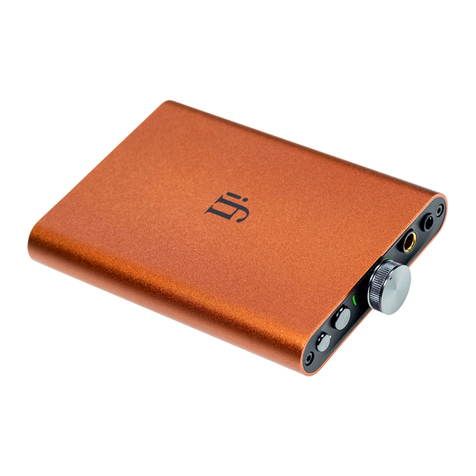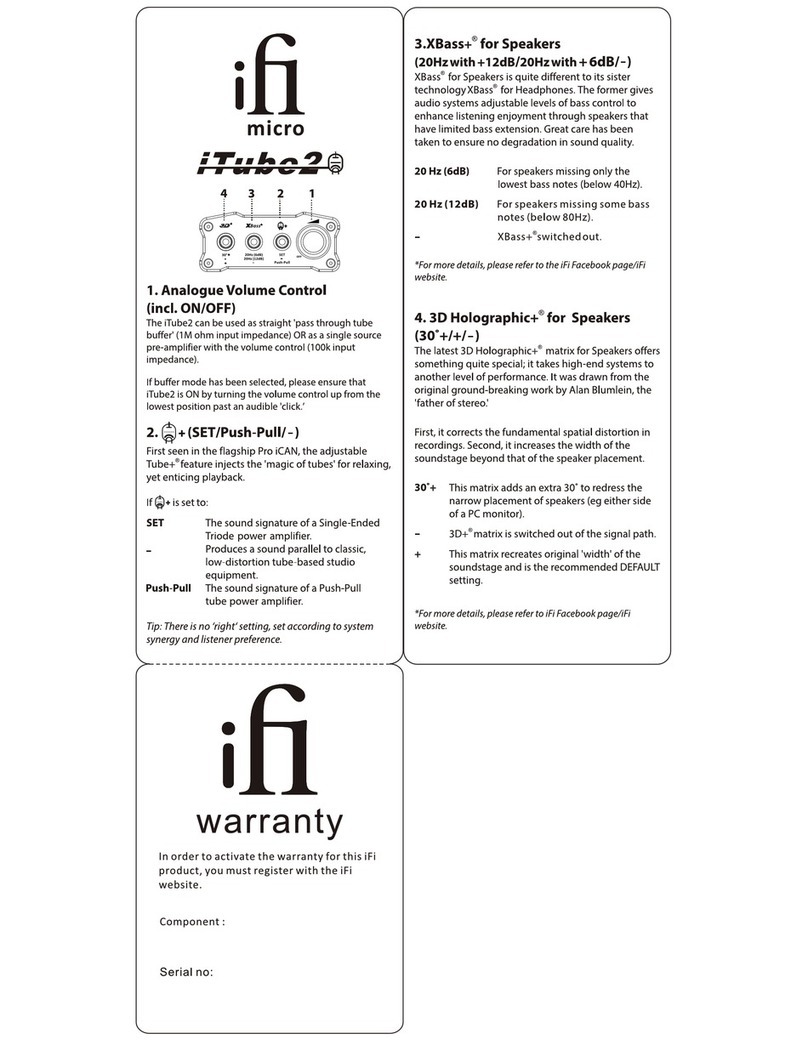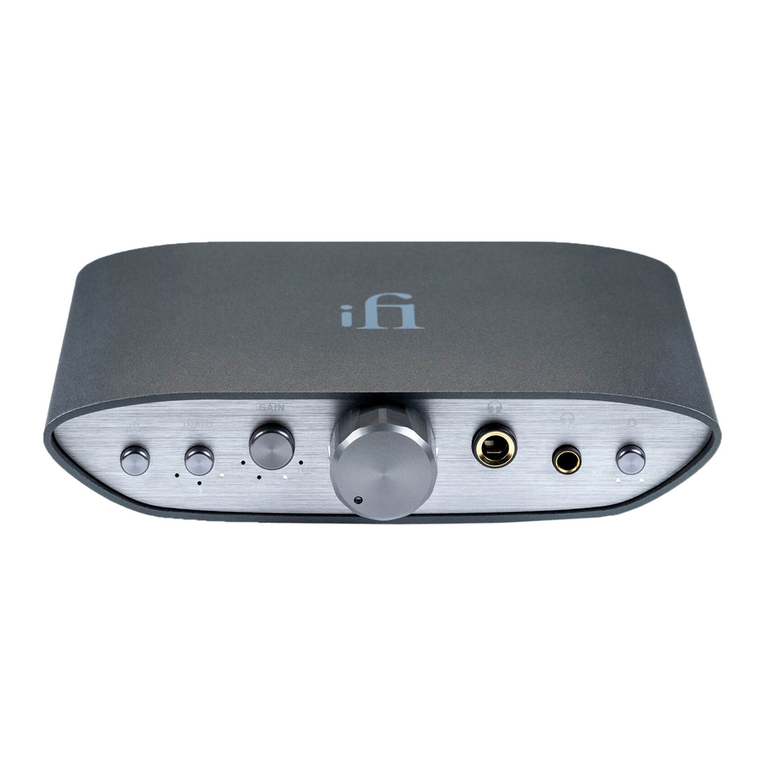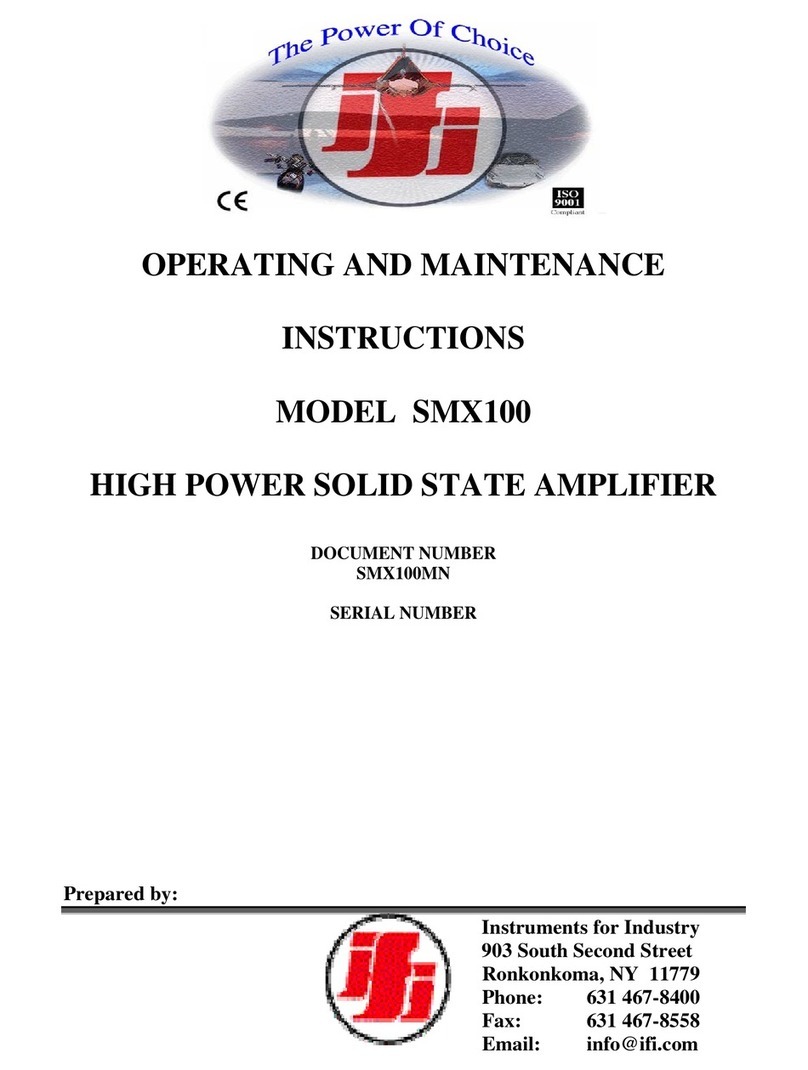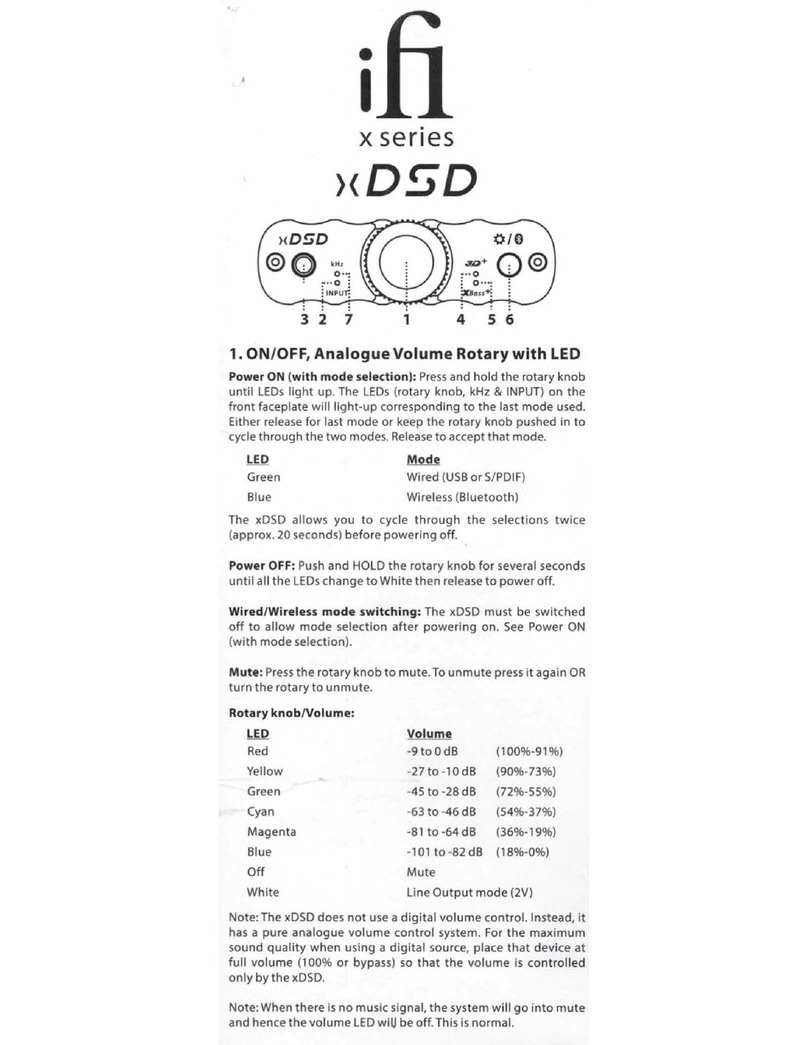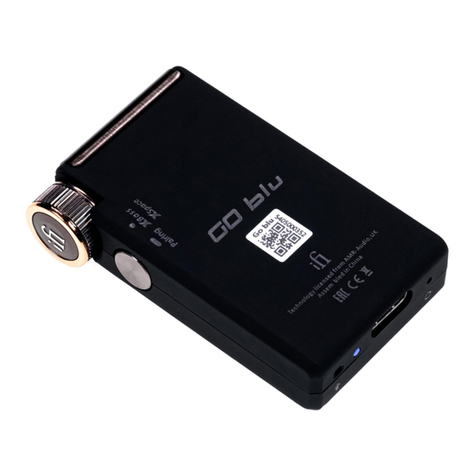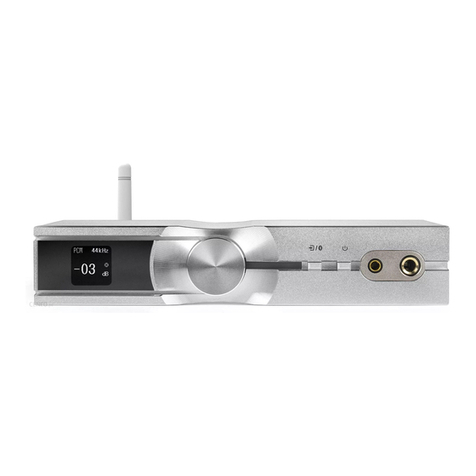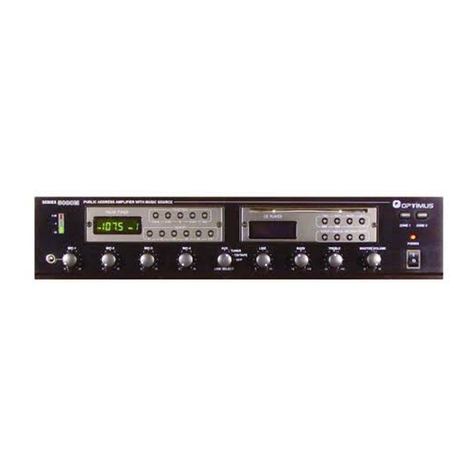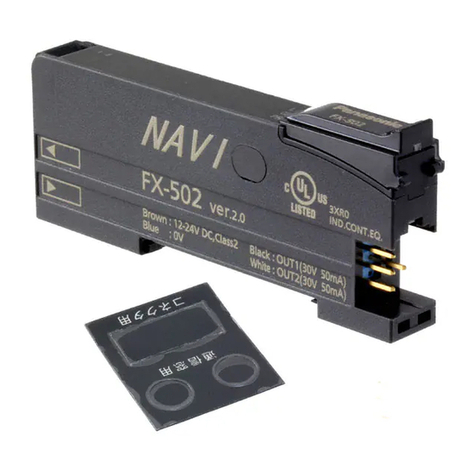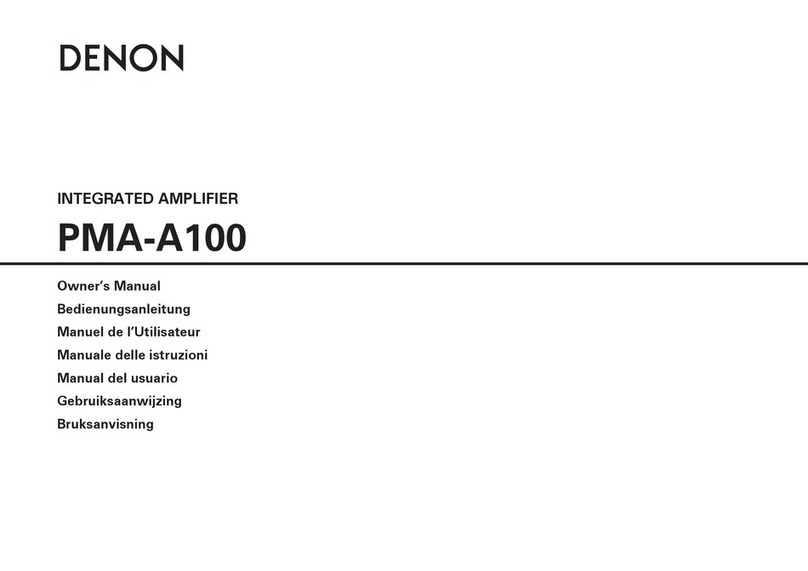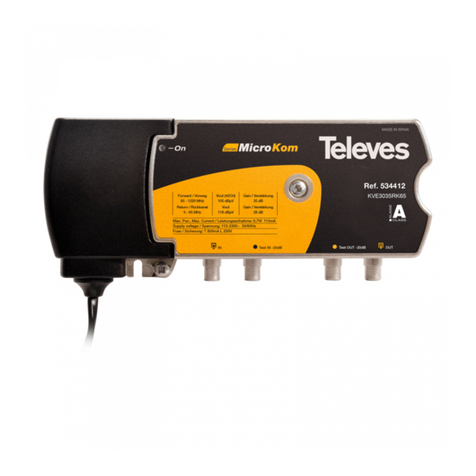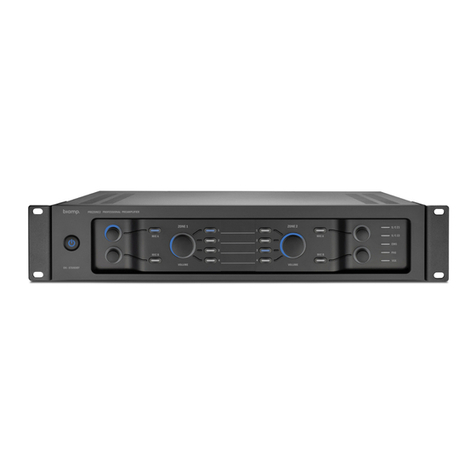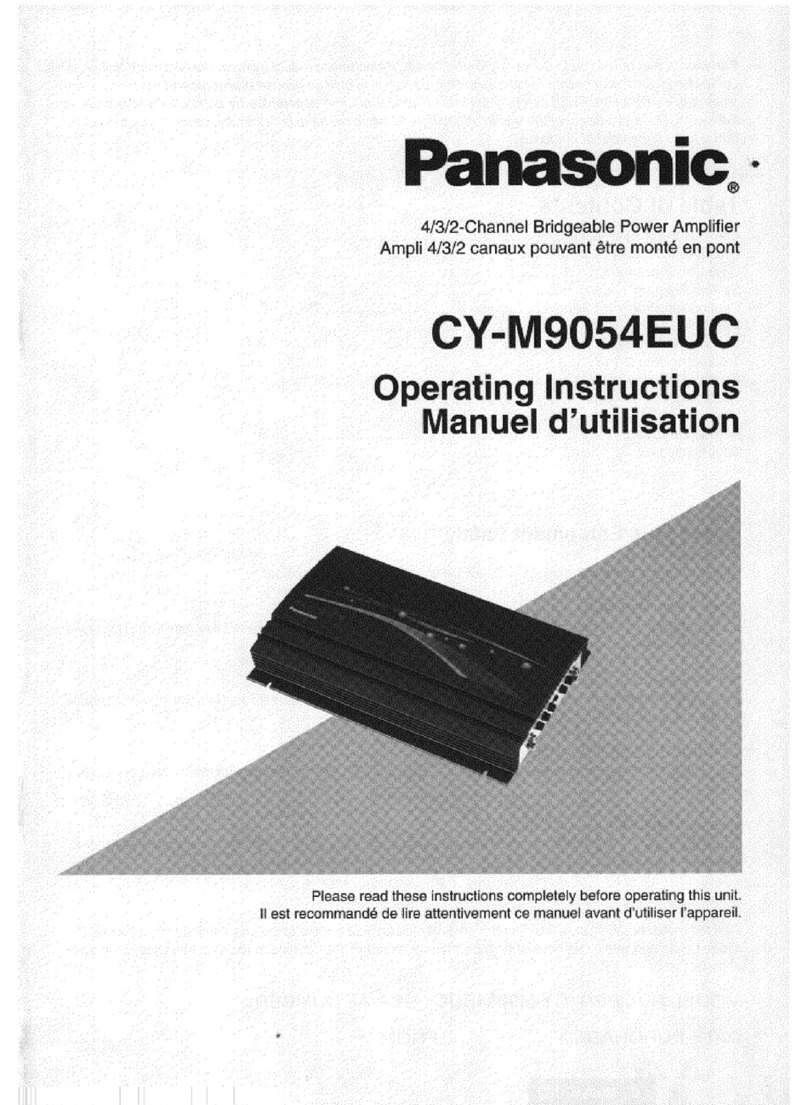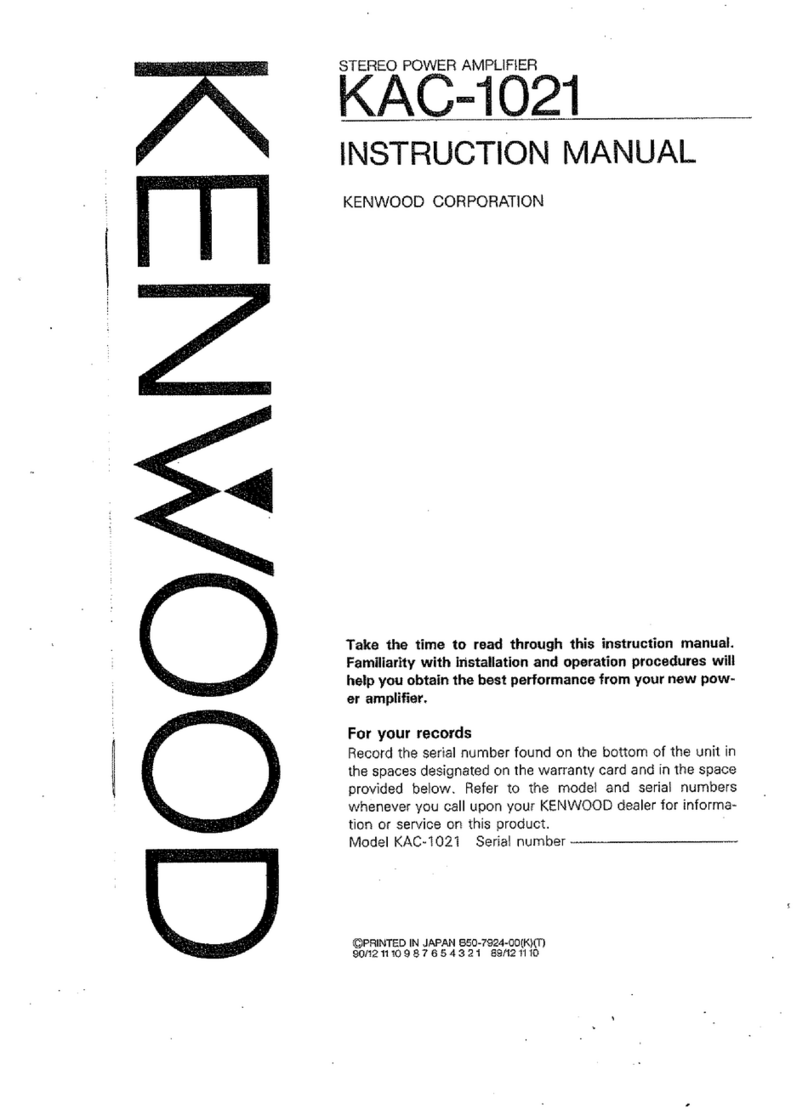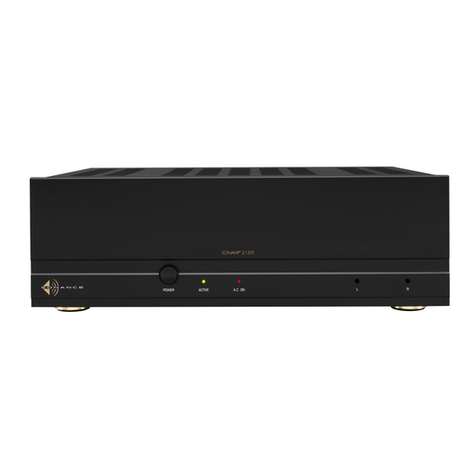ifi S251-250 Manual

Prepared by:
Instruments for Industry
903 South Second Street
Ronkonkoma, NY 11779
Phone: 631 467-8400
Fax: 631 467-8558
Email: [email protected]
OPERATING AND MAINTENANCE
INSTRUCTIONS
MODEL S251-250
WIDE BAND SOLID STATE AMPLIFIER
DOCUMENT NUMBER
S251-250MNL V1.0

Page
2
TABLE OF CONTENTS
SECTION DESCRIPTION PAGE
1.0 INTRODUCTION...........................................................................................4
2.0 GENERAL DESCRIPTION...........................................................................5
2.1 AC Connection and Set-Up ................................................................5
3.0 WARRANTY INFORMATION.....................................................................6
4.0 GENERAL INFORMATION
4.1 Scope Of This Manual........................................................................7
4.2 General Specifications ........................................................................7
4.3 Protection Circuits ..............................................................................8
4.4 Status Indicators, Controls and Connectors......................................10
4.5 Operating Instructions.......................................................................13
4.6 Data Sheets........................................................................................17
5.0 PRINCIPALS OF OPERATION
5.1 Proper Usage And Warnings.............................................................18
5.2 Features Of The Amplifier...............................................................19
5.3 Level Control Board..........................................................................20
5.4 Optional Features..............................................................................20
6.0 AUTOMATIC LEVELING CONTROL (ALC )
6.1 ALC Features....................................................................................21
6.2 Leveling Using The "INT' Mode.......................................................22
` 6.3 Leveling Using The 'EXT' Mode ......................................................23
7.0 IEEE-488 INTERFACE OPTION
7.1 Introduction.......................................................................................26
7.2 Remote Initialization.........................................................................26
7.3 GPIB Address ...................................................................................27
7.4 Status Commands .............................................................................28
7.5 RS-232 Instructions ..........................................................................30
8.0 MAINTENANCE AND SERVICING
8.1 Periodic Maintenance........................................................................31
8.2 Servicing The Amplifier ...................................................................31
8.3 Equipment Return Procedure............................................................32

Page
3
LIST OF FIGURES
FIGURE DESCRIPTION PAGE
1.0 S251-250 ILLUSTRATION ...........................................................................4
2.0 S251-250 REAR PANEL ILLUSTRATION................................................10
3.0 FRONT PANEL DISPLAY START-UP MENU.........................................13
4.0 GPIB ADDRESS MENU..............................................................................14
5.0 MAIN MENU STATUS DISPLAY .............................................................15
6.0 TURNING ON THE AMPLIFIER ...............................................................16
7.0 S251-250 SCHEMATIC DIAGRAM...........................................................19
LIST OF APPENDICES
SECTION APPENDIX DESCRIPTION PAGE
9.0 A AMPLIFIER DATA SHEETS..........................................................33
10.0 B DRAWINGS PACKAGE.................................................................34

Page
4
SECTION 1.0
INTRODUCTION
Congratulations on the purchase of your new Wide Band Amplifier from Instruments For Industry,
Inc. Your new Wide Band Amplifier incorporates the finest advancements in state of the art solid-
state electronics technology available in a compact, portable and versatile package. Your Wide Band
Amplifier's quality, performance and trouble free operation depends on you thoroughly reading
through this manual and familiarizing yourself with its proper operation and usage.
Your Wide Band Amplifier comes with the following accessories, be sure to check your packaging
for the items listed below before disposing of the packaging.
CONTENTS
(For a typical Wide Band Amplifier )
Quantity Description
1 High Power Wide Band Amplifier, Model S251-250
1 AC power line cord
1 Operation and Instruction Manual, Doc. No. S251-250
1 Amplifier Data Sheets (Included with Unit)
FIGURE 1.0
S251-250 ILLUSTRATION

Page
5
SECTION 2.0
GENERAL DESCRIPTION
The Instruments for Industry, Inc. (IFI) manufactured S251-250 Wide Band Amplifier is a Bench Top
or rack mount amplifier providing 250 Watts of RF power from 800 MHz to 2500 MHz
instantaneously.
The Amplifier features a Color Touchscreen that displays continuous forward and reflected power in
three-digit metering. The display also scrolls to provide the operator with operating status and self-
diagnostic fault indications.
The Amplifier is unconditionally stable and incorporates protection circuits that monitor and control
the VSWR input and outputs so the amplifier cannot be damaged by any mismatched load.
The Amplifier may be equipped with an IEEE-488 BUS & RS232 interfaces, which allows the
amplifier to be remotely controlled through the use of as computer.
To operate the Amplifier, connect the single phase power line cord to the IEC connector on the rear
panel.

Page
6
SECTION 3.0
WARRANTY INFORMATION
Instruments For Industry, Inc. (IFI) warrants each product of its manufacture to be free from any
defect in material and workmanship for a period of three years from shipment to the original
purchaser. All warranty returns, however, must first be authorized by our factory office
representative. Refer to the Service Section for information on how to return items for warranty
repair.
Warranty liability shall be limited to repair or replacement of, or part thereof, which proves to be
defective after inspection by IFI. This warranty shall not apply to any IFI product that has been
disassembled, modified, physically or electrically damaged or any product that has been subjected to
conditions exceeding the applicable specifications or ratings.
IFI shall not be liable for any direct or consequential injury, loss or damage incurred through the use,
or the inability to use, any IFI product.
IFI reserves the right to make design changes to any IFI product without incurring any obligation to
make the same changes to previously purchased units.
This warranty is the full extent of obligation and liability assumed by IFI with respect to any and all
IFI products. IFI neither makes, nor authorizes any person to make, any other guarantee or warranty
concerning IFI Products.

Page
7
SECTION 4.0
GENERAL INFORMATION
4.1 SCOPE OF THIS MANUAL
This manual is intended to inform a qualified transmitter operator or technician of the normal
operating and maintenance procedures for the S251-250. It is not intended to be a course of
instruction for unqualified personnel.
4.2 GENERAL SPECIFICATIONS
The specifications listed below represent the minimum performance characteristics at the time of
delivery. SPECIFICATIONS
Frequency Response: 800 - 2500 MHz
Power Output: Minimum 250 Watts
AC Source: 220VAC, 50/60, Single Phase
Power Gain: 54 dB
Input Impedance: Nominal 50 Ohms unbalanced
Output Impedance: Nominal 50 Ohms unbalanced
Input Signal Levels: < 0 dBm ( 1.0 mW ) See data sheet for specific input drive levels
Duty Cycle: CW
Spurious: -50dBc

Page
8
4.3 PROTECTION CIRCUITS
The S251-250 is designed with a variety of protection circuits to provide safeguards for the amplifier
should any adverse electrical conditions occur or if the amplifier accidentally experiences operator
deviation of the design application. Listed below are the safeguards built into the S251-250.
4.3.1 Over Heat Protection
The S251-250 critical components are mounted to heat sinks, which are, in turn, air cooled by four
fans. Should an over heating condition occur, either through component failure or by a restricted
airflow, the S251-250 contains heat sensors that will shut down the system. As a result, the air inlet
and outlet openings should be free of obstructions for proper cooling of the amplifier. Operation is
restored after Fault Reset when the amplifier cools to normal temperature levels.
4.3.2 Input Protection
The S251-250 is designed to operate with less than a 0 dBm (1.0 mW) input signal however, to
prevent overdriving the amplifier, the Input Protection circuit will activate if the input signal exceeds
3 dBm (2.0 mW) and will automatically compensate for the increased input signal by reducing the
gain of the preamplifier. Even though the amplifier has an Input Protection Circuit, overdriving the
amplifier is not recommended; refer to paragraph 5.1.2 for more details.
4.3.3 Output Protection
The S251-250 incorporates a microprocessor controlled Output Protection Circuit which monitors the
Forward Power Meter indication and limits the output power. This feature protects the amplifier
from being over driven and causing damage to the power transistors.
It is important to note that this feature only operates when the Forward and Reverse Sample Ports on
the amplifier have 50 Ohm Terminations installed.
IMPORTANT NOTE:
The S251-250 Sample RF Output connector must be terminated with the supplied 50 Ohm
load if the output is not being used. Should the S251-250 be operated without a termination
on the Sample RF Output connection will jeopardize the accuracy of the metering and output
protection; which are based on the Forward Power Readings, which may result in damaging
the amplifier and voiding the unit’s warranty.

Page
9
4.3.4 Power Supply Faults
The Power Supply Fault circuit monitors the 50 VDC, ± 12 VDC and 5 VDC power supplies and
produces a fault indication should any voltage level deviate from normal operating parameters. Each
power supply voltage output is monitored and displayed to indicate the power supplies are operating
within design parameters. Some units may have Green Status LED Indicators in addition to the
Controller Display. Should any power supply voltage deviate from the design parameters, the
corresponding power supply fault will be displayed
4.3.5 Mismatch Protection
The S251-250 is designed to operate with a tuned 50 Ohm load and should any mismatching of the 50
Ohm load occur, the Reverse Power, also called Reflective Power, will increase producing a high
VSWR. The S251-250 microprocessor monitors the Reverse Power levels by utilizing a Dual
Directional Coupler and begins to turn down the gain of the preamplifier when the Reflected Power
exceeds 40%. The Reverse Power is also displayed on the LCD Display for operator monitoring for
any mismatched load.
4.3.6 Short Circuit Protection
The S251-250 utilizes three different power supply voltages, + 32 VDC, ± 12 VDC and the
+ 5 VDC, each of the power supplies are designed with a short circuit and overload protection
device.

Page
10
4.4 STATUS INDICATORS, CONTROLS AND CONNECTORS
The S251-250 has various controls and status indicators, which are identified below and can be
visually located on Figure 1.0, S251-250 Illustration and Figure 2.0, S251-250 Rear Panel Illustration.
A narrative description for the function and purpose of each control and status indicator is provided
within paragraphs 4.4.1 and 4.4.2.
S251-250 RF AMPLIFIER
Front Panel: Rear Panel:
Local/Remote Switch
AC PWR, IEC Power Connector
Amp ON / OFF Switch
ALC INPUT, BNC Type (Optional)
Operate / Standby Switch
INTERLOCK, BNC Type (Optional)
Fault/Reset Switch
IEEE-488, Connector
Color Touchscreen Display
RS232 Connector
RF Input, N Type, Female
RF Input, N Type, Female
FWD Sample Port,’N’ Type Female
FWD Sample Port,’N’ Type Female
RF Output, N Type, Female
RF Output, N Type, Female
FIGURE 2.0
S251-250 REAR PANEL ILLUSTRATION

Page
11
4.4.1 S251-250 PANEL STATUS INDICATORS
INDICATOR FUNCTION
FAULT INDICATOR The Fault indicator displays a fault when either a Thermal, Power
Supply or Module Fault occurs on Front panel display. Some units may
have Green Status LED Indicators in addition to the Controller Display.
A Thermal Fault occurs when the amplifier is operating outside design
temperatures. Should an excessive temperature condition occur, the
+50 VDC Supply is shut down and a Power Supply fault is indicated.
Once the thermal condition returns to the operational limits, the
+50VDC Supply will activate.
A Power Supply Fault is displayed when the +50 VDC Power Supply
voltage shuts down.
Hi VSWR When the Hi VSWR fault is displayed; the amplifier is subjected to a
condition where the Reflected Power exceeds 40%. The
microprocessor turns down the gain of the preamplifier and displays the
Reverse Power on the LCD Display.
RMT /LCL When remote displays on the front panel the amplifier is in the remote
control mode of operation via the IEEE-488 GBIP Bus. The address
selection can be done through the front panel using the Control Knob.
Follow instructions on the LCD display.
TOTL/OPRT HOUR Elapsed time Indication on the LCD display, presents total hours of the
amplifier or operate hours that it has been energized.

Page
12
4.4.2 S251-250 CONTROLS
CONTROL FUNCTION
Local When depressed, the amplifier is restored to the local control from the
GPIB mode of control.
ALC Switch The optional Automatic Leveling Control (ALC) is a feature, which
selects the method for leveling, either internal, external or manual.
Power ON/OFF The Power On/Off switch is a circuit breaker that is used as an
On/Off switch as well as a circuit protection device. This switch
turns the driver either on or off.
Control Level Adjust Knob The optional Level Adjust control is a ten-turn pot, which allows a
minimum of a 30 dB range of gain. Turning the control Counter
Clockwise (CW) produces a minimum gain.
Important Note: If the amplifier is not equipped with this option, the
display will still indicate a GAIN percentage (refer to Figure 5.0). This
percentage indication is still controlled by Level Adjust Control but the
both the Level Adjust Control and the corresponding GAIN percentage
indication has no effect on the amplifier gain.
FLT/RST The Reset/Fault (FLT/RST) is a reset switch that resets the fault
indication. If a fault indication is present, the fault indication can
remove the by depressing this switch.
OPR/STB The Operate/Standby (OPR/STB) switch which when the switch is set
in the Standby mode, the Power Supply is turned off to the amplifier
circuitry. When set in the Operate mode, the Power Supply delivers
voltage to the amplifier circuitry.

Page
13
4.5 OPERATING INSTRUCTIONS
4.5.1 Power On
FIGURE 3.0 – FRONT PANEL DISPLAY (START-UP MENU)
Apply power to the unit using the front panel ON/OFF switch. When the circuit breaker or AC
Power On switch is energized, An IFI Splash Screen will be displayed after the Microprocessor
(MPU) booting cycle this whole process will be about 45 seconds. The Screen in Figure 3.0 will
appear after the booting process

Page
14
4.5.3 - Entering the GPIB Address
FIGURE 4.0 - GPIB ADDRESS
The GPIB Address can be changed by selecting the GPIB Button . Pressing the Button will scroll
through the numbers There are 31 numbers 1 through 31 .

Page
15
4.5.4 Turning ON the Amplifier
FIGURE 5.0 – MAIN MENU AND STATUS DISPLAY (Typical)
The amplifiers status can be monitored using the Main Menu. The Gain (GAIN), Total Hours
Operating Hours, Amplifier and Base Plate Temperature, STATUS and Faults, Forward (FWD) and
Reflected (RFL) Status are continuously displayed.
FIGURE 6.0 – TURNING ON THE AMPLIFIER (Typical)
1. From the MAIN MENU in Figure 6.0, press the STBY /OPRT Soft Key and the color of the
button will change to Green
2. The display will show the Main DC power supply Voltage and current as per AMPLIFIER
operating data sheet (enclosed in the manual).

Page
16
4.6 DATA SHEETS
Provided with each S251-250 are specific Amplifier Data Sheets measured from the amplifier using a
calibrated 50 Ohm Pad to assist the operator in maximizing the performance of the Wide Band
Amplifier.
The Amplifier Data Sheets are provided with each amplifier exhibiting the actual metering indication
required to produce rated power output as indicated on the data sheet. The actual metering values
were derived by measuring the power output of the amplifier using a calibrated Power Meter and a
calibrated 30 dB Attenuator Pad by inducing an appropriate input signal level to obtain rated power
output. Once the appropriate signal level has been determined to obtain the desired power level, the
actual Front Panel Metering Indication correlates to that power level.
The amplifier data sheets provide the operator with the over all frequency response of the amplifier in
perspective to the amplifier operating frequency ranges. The amplifier data sheets provide the
operator with the actual gain of the amplifier over the frequency band.
The Amplifier Data Sheets are located within Appendix A

Page
17
SECTION 5.0
PRINCIPLES OF OPERATION
5.1 PROPER USAGE AND WARNINGS
5.1.1 Controlling Power Output
With a nominal 50 ohm resistive load and an input signal appropriate to produce a power output
within the limitations specified above, the amplifier may be placed in operation. To interrupt the
output, simply interrupt the input signal or increase the input attenuation setting to produce
commensurate output level reduction. The amplifier may be run indefinitely at rated output. Output
power is usually measured with a power meter and suitable power attenuators.
5.1.2 Input Signal Levels
The S251-250 is designed to operate with less than a 0 dBm ( 1.0 mW ) input signal however, to
prevent over driving the amplifier, the Input Protection circuit will activate if the input signal exceeds
3 dBm ( 2.0 mW ) and will automatically compensate for the increased input signal by reducing the
gain of the preamplifier.
It is not advisable to overdrive any amplifier and depend on protection circuits to maintain proper
gain control. IFI makes available with each shipped amplifier, specific amplifier data so the operator
will know the proper input signal levels to more efficiently operate the amplifier. Refer to the test
data sheets information located in Paragraph 4.6 herein.
5.1.3 Sample RF Output Cautions
The S251-250 Sample RF Output connector located on the rear panel must be terminated with the
supplied 50 Ohm load if the output is not being used. Should the S251-250 be operated without a
termination on the Sample RF Output connection, the lack of loading will jeopardize the accuracy of
the metering and output protection; which are based on the Forward Power Readings.
Important Note: If the amplifier is operated without the 50 Ohm termination, damage to the
amplifier may occur which would void the units warranty.

Page
18
5.2 FEATURES OF THE S251-250 AMPLIFIER
The S251-250 amplifier is intended for applications requiring high gain and power output to 200
Watts, over a wide range of frequencies, without tuning adjustments. The S251-250 amplifies an
input signal source over the frequency range from 800 MHz to 2500M Hz and at a minimum gain of
53dB
FIGURE 7.0
S251-250 SCHEMATIC DIAGRAM
5.2.1 Preamplifier or Optional Preamplifier/Attenuator
The S251-250 amplifier has a preamplifier with approximately 10dB gain; which is powered from an
independent low voltage power supply.
If the amplifier is equipped with the Optional Preamplifier/Attenuator, it provides the amplifier with
remote level control and leveling capability over the entire operating frequency range. With the front
panel level control set at maximum output it has a nominal 4 dB gain and can be adjusted with the
front panel level control over a greater than 30 dB range.

Page
19
5.2.2 Power Amplifier - continued
This amplifier consists of four amplification sections, the final stage having four cascaded high-
power, push-pull devices operating in parallel and combined through a transmission type impedance
transformer.
5.3 MANUAL LEVEL CONTROL
Manual level control is accomplished by adjusting the front panel ten-turn potentiometer, located on
the power supply control unit, to a reference voltage setting between 0 to 5 volts.
5.3.1 Automatic Level Control
In this mode, the S251-250 serves as the voltage comparator and variable gain stage. It will enable
the maintenance of a constant RF voltage vs. frequency at the input to an imperfect load or a virtually
constant E-Field at a measurement point in space. For further information regarding the ALC
operation, refer to Section 6.0.
5.4 OPTIONAL FEATURES
5.4.1 Interlock Feature
The Interlock Feature is an option for the S251-250 that utilizes an Electro Magnetic Interference
(EMI) Testing Room door switch that is mounted to the door in such a manner that when opened, the
switch will automatically induce an ordered shut down of the amplifier and produce a STAND-BY
MODE indication on the LCD Metering Display. When the door is closed, the amplifier resumes
previous testing conditions.
The advantage to this feature is providing an additional safety feature for the growing concerns for
potential hazards due to exposure to EMI Fields. With the Interlock option, all Testing Personnel will
be protected from accidental exposure to EMI Fields. Should the operator desire this optional feature,
the amplifier can be returned to IFI for installation. Refer to Section 8.0 for Equipment Return
Procedure.

Page
20
SECTION 6.0
AUTOMATIC LEVELING CONTROL
6.1 ALC FEATURES
The Automatic Leveling Control (ALC) switch located on the front panel has three positions, 'INT',
'OFF' and 'EXT'. Described below are the features of each position
Important Note: Figures 5.0 and 6.0 indicates the display for a typical amplifier and the ALC option
is indicated however if the amplifier is not equipped with this option, the ALC option will not be
displayed.
6.1.1 The 'INT' Position
The 'INT' or Internal position enables the amplifier to automatically level on an RF power level
selected by an operator displayed on the Forward Power reading located on the Front Panel LCD
display. Using the 'INT' feature, no external sources are required for leveling control and the operator
determined power level will be automatically maintained even though the frequency or input signal
levels might change. Refer to Paragraph 6.2 for the procedure to operate the amplifier in the 'INT'
mode.
6.1.2 The 'OFF' Position
The 'OFF' position enables the amplifier to operate in a passive mode with no automatic features
controlling input drive levels or output power levels. In this mode, the operator has full manual
control of the amplifier including the input signal gain, frequency and power output. As a result, the
operator must be fully knowledgeable of the effects of these variables in relationship to the operating
characteristics of the amplifier. With this in mind, the two most important factors are the dB flatness
of the amplifier over the operating frequency range and the rated output power of the amplifier.
Depending on the response curve provided on the S21 Parameter Plot for the amplifier flatness,
which is located within Appendix A, and the size of the frequency steps of the signal generator can
increase or decrease the power level by as much as 4 dB. This is the result of the design tolerance of
the amplifier to operate within a ± 2 dB over the rated frequency range. A ± 2 dB tolerance means
that the maximum deflection from minimum to maximum of the flatness curve can represent a delta
change up to 4 dB. With this factor in mind, it is advisable to identify the specific frequencies that
represent the greatest change from the nominal 0 dB level and adjust the input signal accordingly in
so that the amplifier is not over driven beyond the rated power specification. Taking these
precautions will prolong the reliability on the amplifier.
Table of contents
Other ifi Amplifier manuals
Popular Amplifier manuals by other brands

Laney
Laney LC15-110 operating instructions

Phil Jones Bass
Phil Jones Bass NANOBASS X4 owner's manual

Stageline
Stageline DIGAM-3000 instruction manual
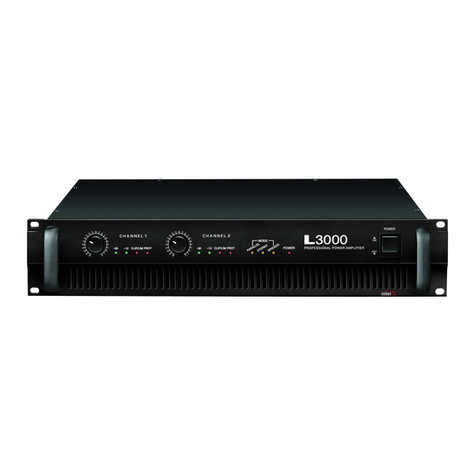
Inter-m
Inter-m L-800 Operation manual
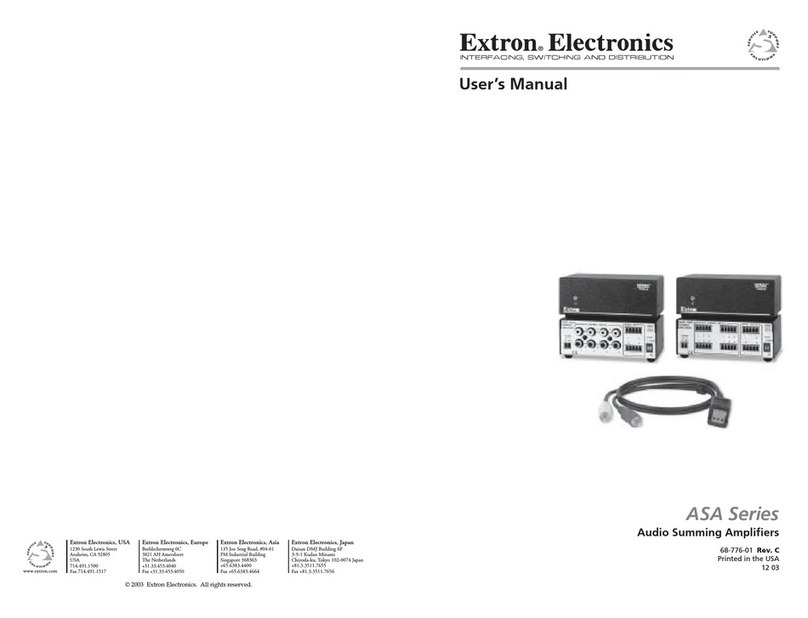
Extron electronics
Extron electronics ASA Series user manual
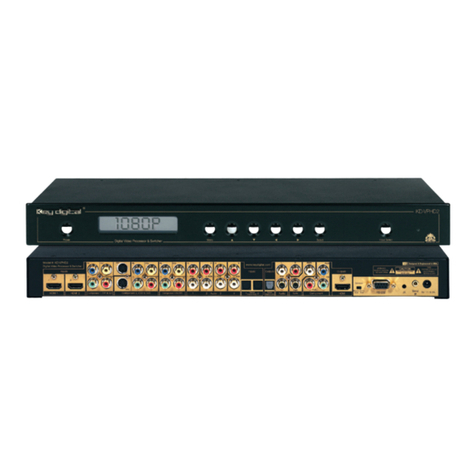
Key Digital
Key Digital Chroma KD-HDMI2X4P product catalog
